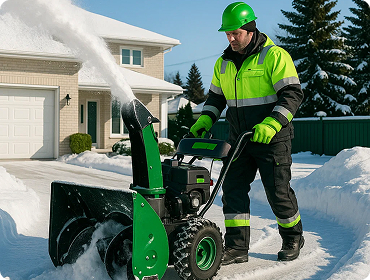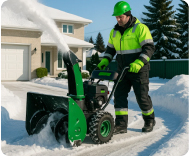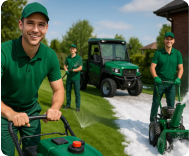As the weather cools and the days get shorter, your lawn is preparing for its long winter nap. But just because it's slowing down doesn't mean your work is done. Proper fall lawn care is essential to ensure your grass survives the harsh winter and comes back healthy and green in the spring. Neglecting these crucial steps can leave your lawn vulnerable to disease, pests, and a slow, patchy recovery. Here are the most important steps to take to get your lawn ready for winter.
1. Rake All Fallen Leaves and Debris
This is arguably the most important step. A thick blanket of leaves might look harmless, but it can be a death sentence for your grass. Leaves block sunlight and trap moisture, creating a perfect environment for fungal diseases like snow mold. They also suffocate the grass, preventing it from getting the air it needs. Be diligent about raking or using a mulching mower to break down the leaves into small, grass-friendly pieces that can decompose and add nutrients back to the soil.
2. Fertilize One Last Time
Think of your final fall fertilization as a "last meal" for your lawn before winter. Applying a winterizer fertilizer (one that's high in potassium and low in nitrogen) in late fall gives your grass the nutrients it needs to build a strong root system. This energy is stored over the winter, helping your lawn resist cold stress and giving it a head start for a quick green-up in the spring. The best time to do this is when the grass is still green but has stopped actively growing.
3. Aerate to Reduce Compaction
After a long summer of foot traffic and heavy use, your soil can become compacted. This makes it difficult for water, air, and nutrients to reach the grass roots. Aeration, which involves punching small holes in the soil, is a highly effective way to relieve this compaction. Doing this in the fall allows your lawn to heal before winter and ensures that the nutrients from your winterizer fertilizer can penetrate deep into the soil where they're needed most.
4. Mow to the Correct Height
As you get ready for the last cut of the season, gradually lower your mower blade. The final mow should leave the grass at about 2 to 2.5 inches tall. Mowing too high can leave long blades that fold over and mat, creating a breeding ground for snow mold. Cutting too short, however, can stress the grass and damage the root system. A shorter cut allows air and sunlight to reach the crown of the grass, keeping it healthy during the cold months.
5. Don't Forget to Winterize Your Irrigation System
If you have an in-ground sprinkler system, winterizing it is not optional—it’s essential. Water left in the pipes can freeze and expand, causing pipes to burst and leading to costly repairs in the spring. A professional irrigation blowout uses an air compressor to remove all water from the system, ensuring it is safe for the freezing temperatures. We offer professional winterization services to protect your investment and ensure your system is ready for spring.



